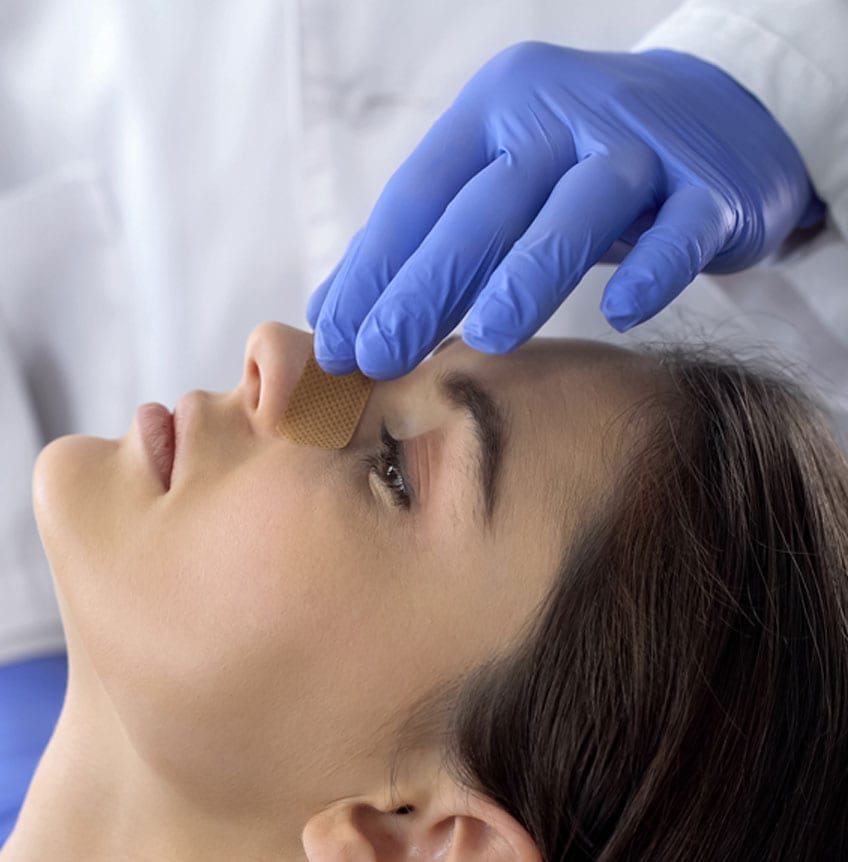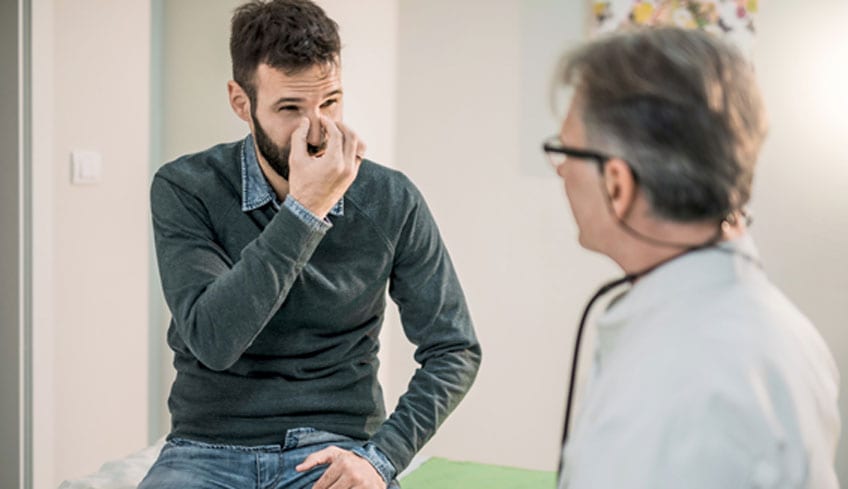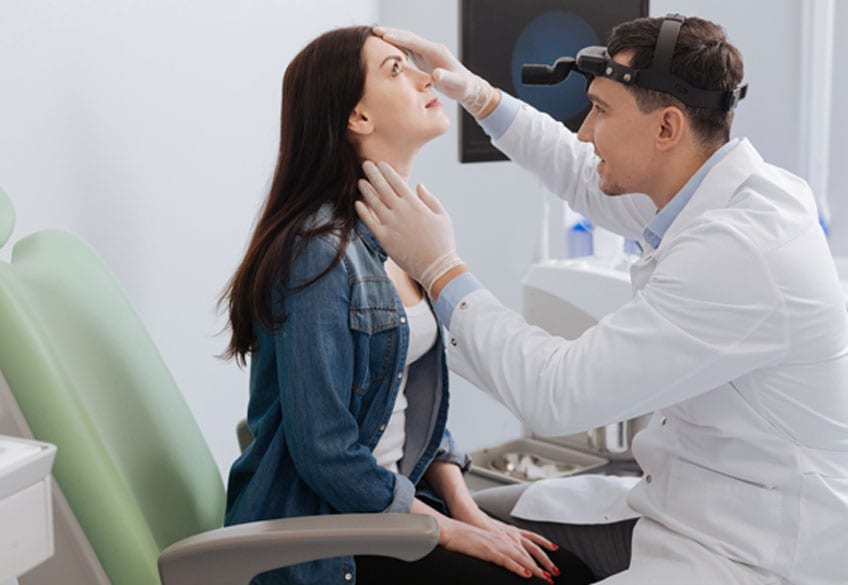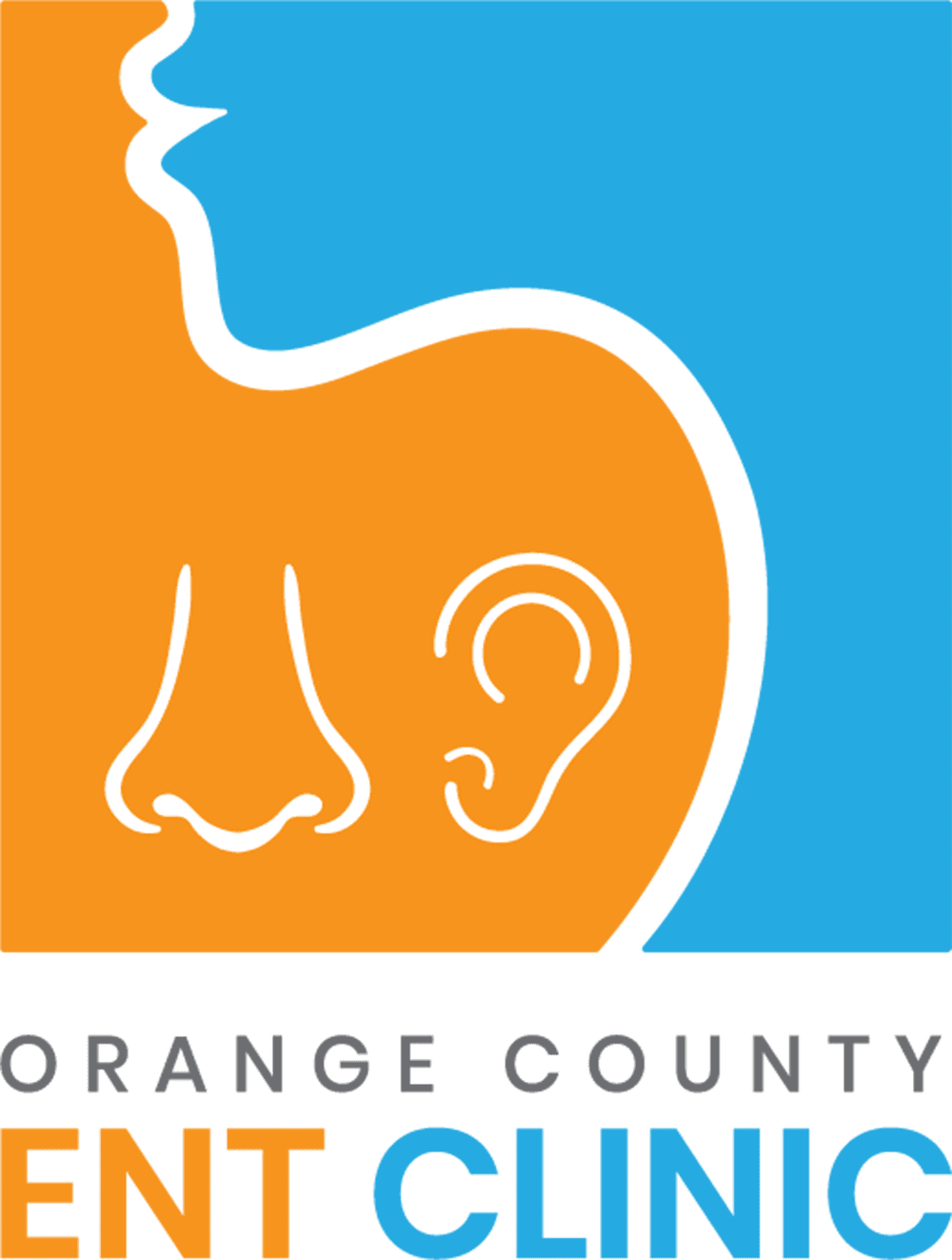
If the thick tissue (cartilage) that divides your nostrils is excessively crooked, it’s referred to as a deviated septum. If this nasal dividing wall is positioned too far from the center one way or the other, you may have trouble breathing, poor nasal drainage, or recurring sinus infections (sinusitis). If it’s believed your nasal septum may need to be realigned, you may be referred to a septoplasty surgeon in Mission Viejo.
Reasons to See a Mission Viejo Septoplasty Surgeon
Chronic mouth-breathing, disruptive snoring, recurring nasal congestion, worsening allergy symptoms, and sleep apnea are just some of the issues that can be related in some way to a deviated nasal septum. These are also among the top reasons to see a septoplasty surgeon in Mission Viejo. A thorough examination either with handheld tools or a specially designed lighted scope can be done to determine if your septum needs to be surgically realigned or repositioned to improve airflow and relieve disruptive symptoms.
Preparing for Surgery
Prior to surgery, a septoplasty surgeon in Mission Viejo often discusses procedure expectations. This is done so you’ll have a realistic idea of what can be accomplished with this type of surgery. You’ll also need to disclose all medications you may be taking, including NSAIDs, blood thinners, and other drugs that could contribute to bleeding problems. Photographs of your nose may be taken as well for reference purposes.


How Septoplasty Is Performed
In addition to local or general anesthesia, some patients benefit from IV-delivered sedatives administered during surgery. The procedure itself involves straightening your nasal septum by repositioning it, trimming tissues, or, in some cases, replacing bone or cartilage. Reinforcing cartilage strips (spreader grafts) are sometimes used by a septoplasty surgeon in Mission Viejo if the misalignment is along the bridge of the nose. A protective covering called the mucous membrane is also moved during surgery and repositioned and reattached once the septum has been realigned. Silicone splints may also be inserted to support the repositioned septum.
Recovering from Surgery
Nasal packing can help with post-surgery bleeding. There may also be temporary swelling. Medication can help with any discomfort you might experience after surgery. It can also be helpful to avoid blowing your nose for a few weeks and refrain from sleeping on your back since this position places direct pressure on your nose. Strenuous activities involving jolting or jostling movements should also be avoided for about a month so you don’t get nosebleeds. Follow-up exams will also be done to ensure that everything is healing as expected.
It usually takes about 3-6 months for nasal tissues to heal and become stable. During this period, your nasal septum’s shape may change slightly, adjustments that could continue for up to a year or so after surgery. But if you don’t see the desired results after everything has healed, a septoplasty surgeon in Mission Viejo may recommend additional surgery to fine-tune the shape of your septum and nose. Some patients also have separate cosmetic nose-reshaping surgery (rhinoplasty) if there is a desire to further adjust the appearance of the nose.
